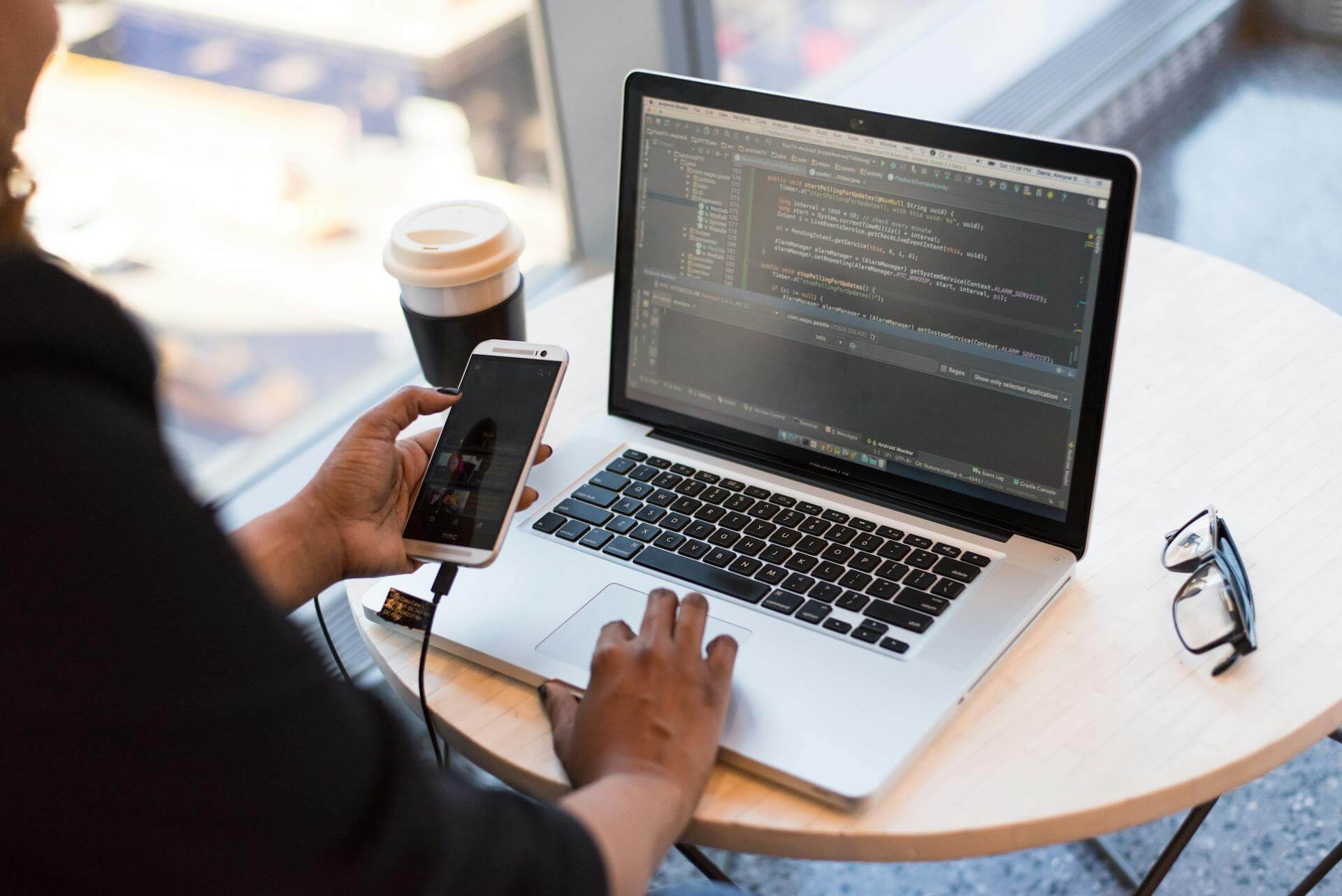E-commerce and retail websites experience bounce rates between 25% to 40% from their home page itself. After all the efforts you’ve put in to make your storefront look impressive and intuitive for online shoppers, you obviously don’t want to miss a conversion opportunity.
But despite the efforts most online businesses dedicate towards their homepage design, here’s a graphical representation of benchmark bounce rates categorized by industry:

Source - CXL
Your homepage is your storefront identity.
This means your homepage is what is going to create your store’s first impression. If customers don’t see any real value and or are not convinced enough about your credibility from the get-go, they will bounce, and that’s exactly what happens in most industries.
Building and designing a homepage that serves the purpose and enhances a customer’s shopping journey can be pretty tricky for starters. But, we got your back!
Continuing on our series of CRO (conversion rate optimization tips), we’ve created a list of ecommerce homepage CRO strategies that you need to implement to prevent visitors from walking away.
If you missed our first post in the Expert CRO tips series, you can read it here: How to optimize your Shopify store speed.
Ecommerce homepage best practices to boost your conversion rate
1. Let your USP take center-stage
As a brand, you need to define your unique selling proposition (USP). This is especially important when you belong to a particularly crowded market domain; like clothing and apparel, for instance. However, every brand, irrespective of the number of competitors, needs to scream their value propositions to their consumers. This is what will help persuade them to purchase from your store.
Unless you can specifically point out what sets your brand unique in an endless sea of homogeneous competitors, you cannot reach your sales goals effectively. And your target audience will most definitely turn to your competitors instead.
Your ecommerce homepage design needs to incorporate your value proposition in the most seamless yet hard-to-ignore kind of way. Consider it as the glass display of your traditional brick-and-mortar store. Only if consumers like what is displayed upfront, they’ll choose to enter the store, browse and possibly make an actual purchase.
Take a look at 2pt5 Health Inc’s homepage. They have very smartly placed their catchy tagline in the center of the hero element on the homepage. The message is short and simple - “On-The-Go Energy for Brand & Body''. But, it clearly outlines the benefits of their products from the get-go.

2. Add a hard-to-ignore sale section
Sales help you close more deals faster. They improve and increase your conversion rates exponentially.
Think about the number of times you made an impulsive purchase just because that item was on sale.
Running any business is a lot about understanding consumer psychology. This is called sales psychology. You don’t have to always convince customers that they need what you are selling. Instead, you need to find ways to cater to their current wants and needs. And any consumer loves a good deal.
Having a distinguished sale section on your homepage helps persuade and convince buyers faster. This is because just providing great deals is never enough. Easy discoverability and access to these irresistible offers are crucial too.
Check out Fashion Nova’s homepage from this February. The sale is so prominently displayed that it is hard for any site visitor to simply miss it. Additionally, they have also added a countdown timer on the homepage creating a sense of FOMO around the sale.

3. Make your search bar stand out
A noticeable search bar on your Shopify homepage design gives you a competitive advantage.
You need to ensure that you don’t just work on how it looks. Your e-commerce homepage UX can be enhanced ten folds by using a functional search bar.
Consider this - 61% of sites require their users to search the exact product name. This means that if a user searches for ‘hair dryer’ but the product is listed in the catalog as let’s say, ‘blow dryer’, the site search won’t display the desired results.
Take a look at the top search queries on ecommerce stores:

Source: Baymard Institute
With the integration of AI and other necessary technologies, you can improve your consumer’s shopping journey. And if a customer enjoys this experience, they will return to make another purchase or will recommend your store to friends and families.

4. Add Product Images to Categories
Your product categories present an overview of your store.
Product photography holds a lot of value in online shopping. Since buyers cannot physically see it, this is their best bet at analyzing the product. If the products are not shown clearly, it will adversely affect your conversion rate.
Give your website visitors a glimpse of it on the homepage itself. This helps capture their interest.
Take a look at how Huda Beauty uses blog banners to display various categories on their homepage. The pictures are clear, high-quality, and eye-catching.

Additionally, they’ve also added images in their navigation bar. This also helps give the user a better idea of the products in-store.

5. Feature your best-selling and new products
Placing a separate section of best-selling products on your homepage helps improve your ecommerce CRO.
This section stands out as a recommendation for your customers. It primarily helps them make a purchase decision faster. Here’s an example of how Croma displays its best-selling products on its homepage.

You can also add a section displaying your new products. Even this helps persuade the consumer to make a purchase.
Take a look at how Nike displays its latest products.

6. Place additional information in the footer
Familiarity is an important aspect of design. There are several benefits of using a familiar design like reducing. Improving usage speed is one. Additionally, it also helps designers by allowing them to use existing design patterns, with proven solutions. This helps speed up a designer’s job. It also helps build an e-commerce website that gives a seamless experience to its users.
It’s a common design practice to display important information and links in the footer. Users expect to find this information there. Adding a clear and to-the-point footer helps improve navigation and the overall UX of your online store.
Here’s an example from Lenskart:

Notice how they have provided basic information about their store, added hyperlinks to their services, detailed about section, and also customer support.
What is interesting here is that they have collapsible sections of the three main categories of eyewear and linked their best-selling products here as well - a brilliant attempt at improving their conversion rate. Finally, they’ve included links to their mobile application on the Google Play Store and the Apple Store.
7. Create a personalized shopping experience
It is crucial to understand Why Your Shopify Store Design Is Important to Increase Conversion Rates. User Interface along with User Experience are the torch bearers of your online store.
You can take this experience of your store a notch higher by providing personalized recommendations, for instance. You can do so by using a customer’s browsing and purchase history.
Amazon does an incredible job at making the shopping experience as personalized as possible.
You can also add a section called ‘Buy Again’ to improve your repurchase and retention rates.

Also read: How to deliver an immersive shopping experience to your customers with technology
8. Design for mobile-first
The last time you purchased from an e-commerce store, you most probably placed this order from your very own mobile phone.
According to Statista, “Worldwide, e-commerce growth is primarily being driven by consumers using their mobile devices, phones, and tablets, to acquire goods and services”.
This is why you need to prioritize how your e-commerce homepage looks on smartphones and not just on desktops.

Source - Statista
Also read: How to upgrade your storefront design with the latest trends
9. Optimize your homepage to load faster
A slow and laggy homepage will drive your potential customer away before you even pitch what it is that you have to offer. Page speed is an important requirement when building an e-commerce site today.
While setting up an online store has gotten very easy and simple over the years, optimizing it to deliver the best results requires much more work. From compressing the images used to periodically analyzing your website performance, ensuring that your homepage speed is optimal will enhance the overall User Experience (UX) of your ecommerce homepage design.
Also read - Expert CRO Tips: How To Optimize Your Shopify Store Page Speed
Helpful reads
Over the last few years, we have had the chance to build custom homepage designs and optimize existing storefronts for conversions, for various brands. Taking note of the best practices we have followed, here are some of the additional reads we recommend from our blog for homepage designs:
- 10 Best Practices for Shopify Homepage Design
- 10 Examples of Homepages That Increase Shopper Engagement
- Shopify Design Mistakes That Impact Your Store’s Revenue
Conclusion
Studies have found that a website’s homepage tends to get indexed faster, and has a higher chance of ranking on the search results for consumer queries. This is because it tends to be the one segment of your website that gets updated more frequently as compared to the others.
Be it in terms of the products you display on the homepage, your banner images or the messaging to promote the ongoing sales and discounts, the regular updates result in frequent indexing - which in turn improves the SEO of your homepage.
So when the homepage has such a high potential for driving organic traffic, we believe it should also add to your conversions.
Are you experiencing high drop-offs from your homepage? You can reach out to us for a UI/UX and strategy audit here.
Want to learn more about optimizing your store for higher conversions? Subscribe to our blog for the next lesson!




